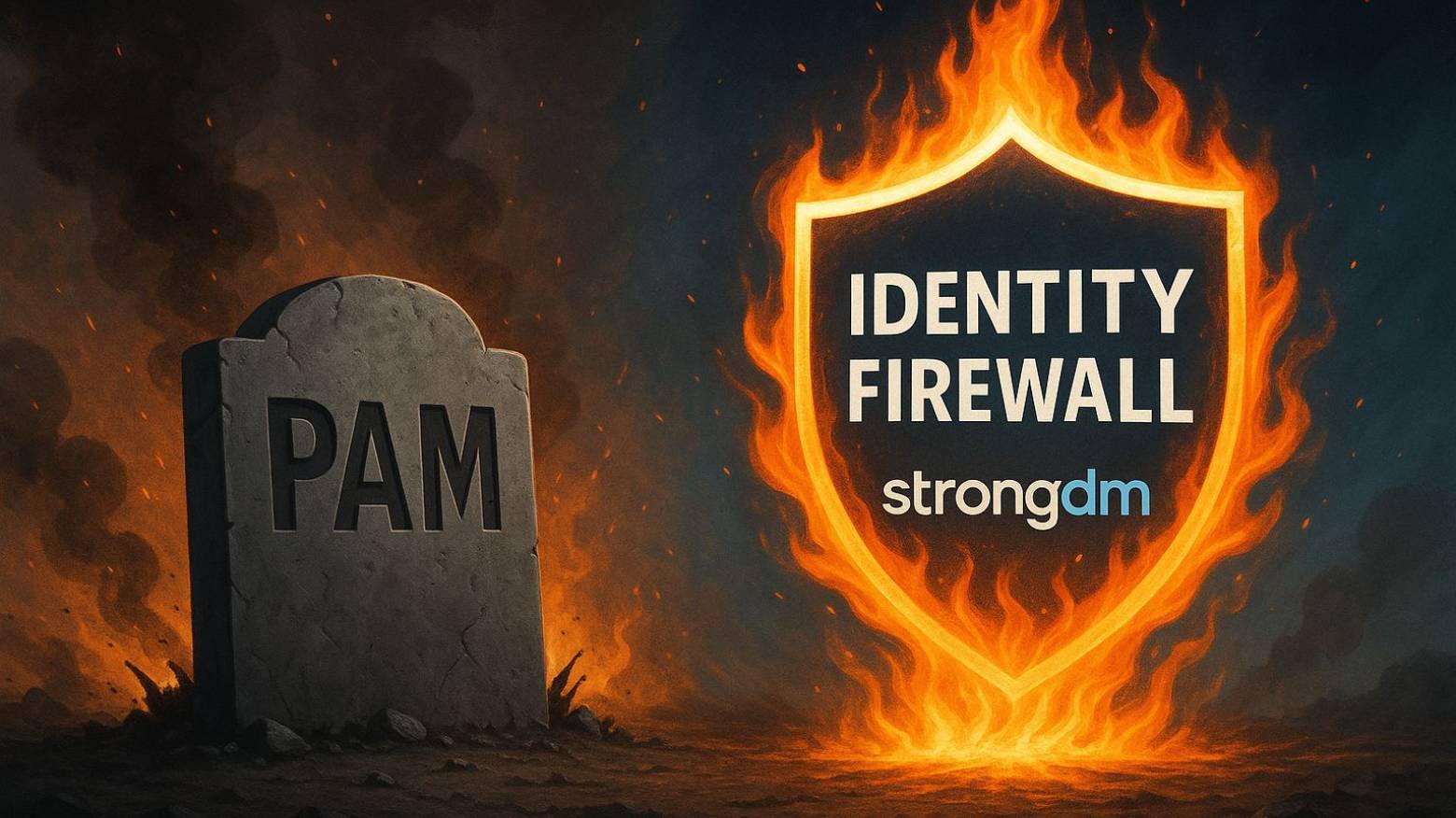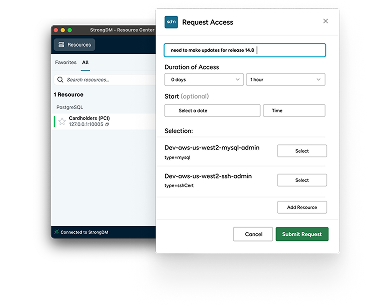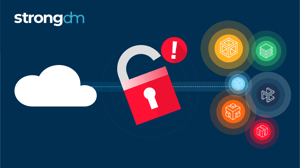From Legacy PAM to Identity Firewall: The Shift is Here


Written by
Tim PrendergastLast updated on:
August 25, 2025Reading time:
Contents
Built for Security. Loved by Devs.
- Free Trial — No Credit Card Needed
- Full Access to All Features
- Trusted by the Fortune 100, early startups, and everyone in between
When Palo Alto Networks announced its $25 billion acquisition of CyberArk, it sent a clear signal to the cybersecurity industry: identity has become the third pillar of security, alongside network and endpoint protection. Having spent decades building and scaling security solutions, this massive investment validates what many of us have long believed, but it also exposes the fundamental limitations of trying to solve tomorrow's problems with yesterday's architecture.
CyberArk built its empire on legacy PAM — password vaults, static credentials, and session brokering designed for a simpler era. That $25 billion exit price isn't just validation of the privileged access market; it's an admission that legacy PAM has reached its architectural limits in a cloud-native world.
This isn't just about market consolidation; it signals that old-school privileged access management is on the way out.
The Convergence Crisis
The identity security landscape has become impossibly fragmented. A recent conversation with a CIO at a major financial services company perfectly captured the problem: "We have 47 identity-related tools. We know who's in our systems, but we have no idea what they're actually doing once they get there."
Today's organizations are drowning in point solutions:
- IAM handles authentication but stops at login
- IGA manages provisioning but lacks runtime enforcement
- PAM secures privileged access but can't control post-login actions
- CIEM analyzes cloud permissions but remains passive
- ITDR detects threats but can't prevent them in real-time
The result? A patchwork of siloed controls with massive blind spots between login and action. In other words, a security model based on static approval in a world that demands continuous, context-aware governance.
Legacy PAM's Innovation Wall
CyberArk's exit at $25 billion tells a bigger story — it’s time to leave your legacy behind.
Outdated PAM solutions share fundamental flaws that no amount of integration can fix: complex, lengthy deployments that frustrate IT teams; functionality limited to traditional infrastructure; workflow disruptions that drive user workarounds; and static credential vaults that leave standing privileges everywhere.
These slow, cumbersome processes push developers to share credentials and bypass controls, turning a “secure” solution into a security liability.
What Modern Organizations Actually Need
Through countless customer conversations, a clear pattern emerges. Organizations don't want better versions of old tools—they want architectural transformation.
A Fortune 500 CIO told me: "JIT access gives us control, but I need it for everyone to move fast without sacrificing security." An SVP of Engineering at a high-growth SaaS company was even more direct: "We need solutions that enable productivity AND risk mitigation simultaneously."
The market is asking for:
- Zero standing access that integrates with modern DevOps workflows
- Real-time enforcement across Kubernetes, containers, and service mesh architectures
- Fine-grained authorization that works with ephemeral, cloud-native infrastructure
- Controls built for today's reality, not retrofitted from decade-old designs
The Identity Firewall Architecture
Just as network firewalls inspect every packet between network zones, the Identity Firewall inspects every privileged action between identity zones, enforcing policy not just at login, but continuously throughout every session. The concept is simple: identity is the new perimeter, and authorization is the new enforcement point.
Beyond Static Trust Boundaries
Traditional firewalls once protected network perimeters, and as boundaries evolved—from appliances to next-gen firewalls, ZTNA, and SASE—the core principle remained the same: enforce at trust boundaries.
The Identity Firewall represents the next evolution. Where legacy identity tools stop at authentication or provisioning, the Identity Firewall provides real-time, action-level control across every privileged interaction.
A Unified Control Layer
The Identity Firewall functions as a real-time control plane between users (human and machine) and the services they access—infrastructure, data, SaaS, APIs, and more. It delivers three essential capabilities:
Control: Fine-grained authorization, just-in-time access, and threat prevention at the action level
Governance: Automated provisioning, lifecycle management, and continuous policy enforcement
Visibility: Complete session recording, real-time analytics, and behavioral risk detection
This architecture solves what legacy tools miss: continuous, context-aware enforcement of privileged actions across all identity and infrastructure boundaries.
The Real Opportunity
While Palo Alto attempts to integrate decades of legacy identity tools into a unified platform, the market has already moved beyond bundles toward purpose-built modern architectures.
Organizations need solutions designed for today's ephemeral, containerized, API-driven world—not yesterday's static infrastructure assumptions. The Identity Firewall provides that foundation, enabling organizations to govern privileged access with the same rigor they apply to network traffic.
We've accepted that firewalls inspect every packet. The question is: why are we still granting broad, persistent access to critical systems and hoping for the best?
The Transformation Begins Now
More than just an incremental improvement, the Identity Firewall is an architectural transformation that enables both security and velocity in modern environments. Organizations ready to lead this transformation will build competitive advantages that extend far beyond security compliance.
Forward-thinking leaders understand that leaving legacy approaches behind isn't just about technology—it's about leaving a lasting legacy of innovation and security excellence.
The $25 billion wake-up call has sounded. The question isn't whether this transformation will happen—it's whether your organization will lead it or follow it.
Ready to Lead the Identity Security Transformation?
The shift from legacy PAM to modern Identity Security architectures is accelerating, and early movers are discovering that real-time authorization doesn't just improve security, it unlocks operational velocity impossible with traditional approaches.
Ready to move without the financial friction? StrongDM eliminates the barriers to Identity Security Transformation: Get StrongDM at zero cost* for your remaining legacy PAM contract period.
Leave your legacy PAM today!
* StrongDM is provided at no cost while under contract with your current PAM provider - up to 6 months. Additional 12-month minimum StrongDM commitment after legacy contract ends.
Next Steps
StrongDM unifies access management across databases, servers, clusters, and more—for IT, security, and DevOps teams.
- Learn how StrongDM works
- Book a personalized demo
- Start your free StrongDM trial


About the Author
Tim Prendergast, Chief Executive Officer (CEO), before joining StrongDM, Tim founded Evident.io—the first real-time API-based cloud security platform. In 2018, Palo Alto Networks (PANW) acquired Evident.io, and Tim joined the executive team at PANW. As the first Chief Cloud Officer, Tim helped outline GTM and product strategy with the C-suite for the cloud business. Tim also served as the principal architect for Adobe's Cloud Team, designing and scaling elastic AWS infrastructure to spark digital transformation across the industry. Tim’s love for innovation drives his interest as an investor in true market disrupters. He enjoys mentoring startup founders and serving as an advisor.
You May Also Like





